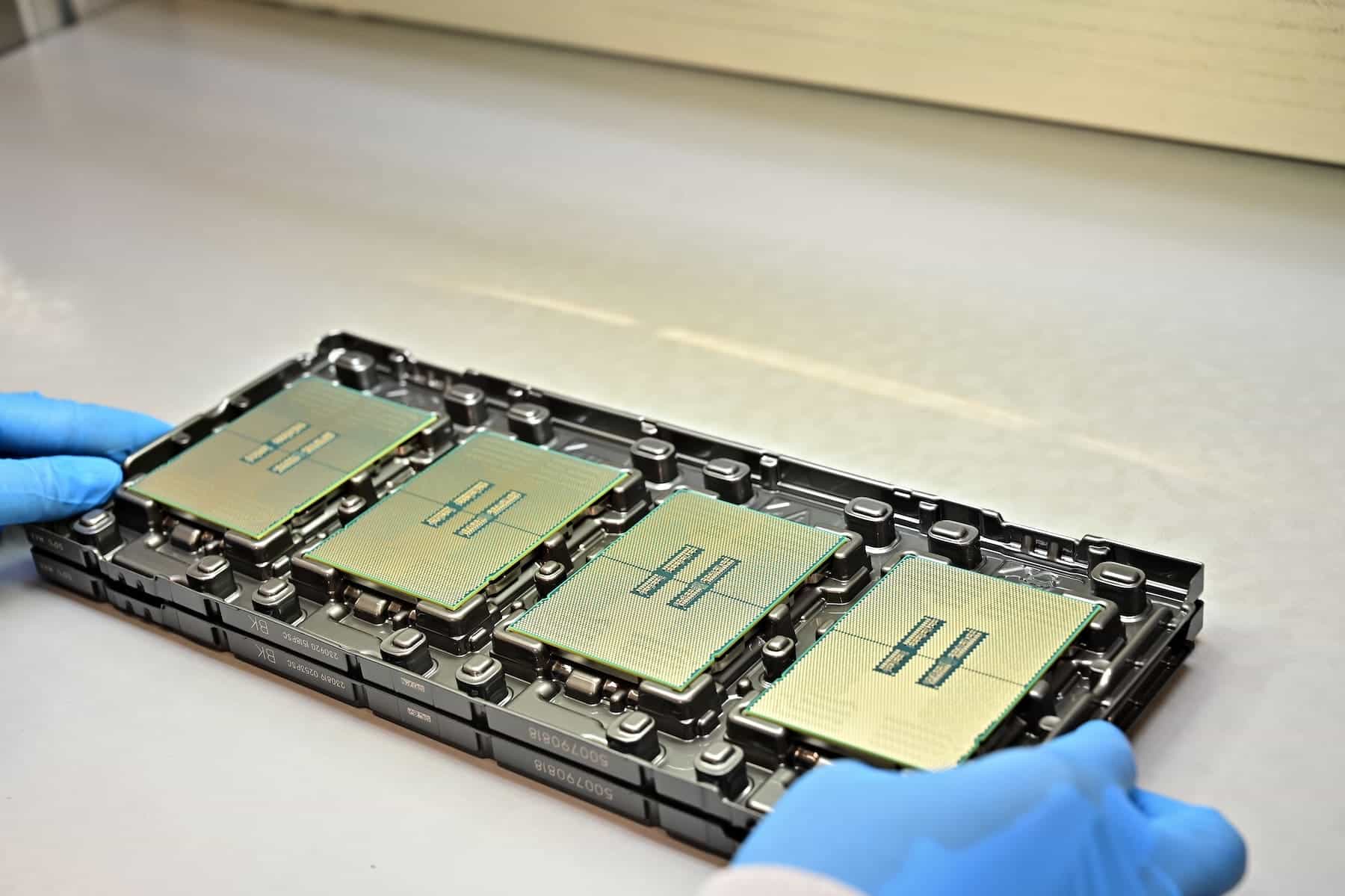Intel has made a significant cut in the price of its Xeon 6 ‘Granite Rapids’ processors, just four months after their launch in September 2024. The reduction reaches up to $5,340 per unit, placing its chips below the price of AMD EPYC ‘Genoa’ in absolute terms as well as cost per core, a strategy that seems aimed at curbing AMD’s increasing presence in the data center market.
Price Cuts: Up to 30% Lower on Some Models
Intel has not made an official announcement about these discounts, but the new prices have been updated in its public database ark.intel.com, confirming their validity. The price drop varies by model, from $1,585 less on the Xeon 6975P (96 cores) to the mentioned reduction of $5,340 on the top-tier model Xeon 6980P (128 cores).
In percentage terms, most processors in this line have seen cuts of 30%, while others, like the Xeon 6972P (96 cores) and the Xeon 6952P (96 cores), have recorded decreases of 13% and 20%, respectively.
| Model | Current Price | Previous Price | Reduction | Cores/Threads | TDP (W) |
|---|---|---|---|---|---|
| Xeon 6980P (128 cores) | $12,460 | $17,800 | -$5,340 (30%) | 128 / 256 | 500W |
| Xeon 6979P (120 cores) | $11,025 | $15,750 | -$4,725 (30%) | 120 / 240 | 500W |
| Xeon 6972P (96 cores) | $10,220 | $11,805 | -$1,585 (13%) | 96 / 192 | 500W |
| Xeon 6952P (96 cores) | $9,115 | $11,400 | -$2,285 (20%) | 96 / 192 | 400W |
| Xeon 6960P (72 cores) | $9,625 | $13,750 | -$4,125 (30%) | 72 / 144 | 500W |
These price adjustments put Intel in a more competitive position against AMD EPYC 9000 ‘Genoa’ chips, which had been dominating the segment due to their better performance-to-price ratio.
Competing with AMD: Intel Cuts Price per Core
One of the most significant changes is that the Xeon 6 ‘Granite Rapids’ now cost less than the EPYC Genoa 9000 in terms of cost per core, which is key for customers like cloud service providers (CSPs) and large data centers.
For example, the Xeon 6980P with 128 cores has a price per core of $97, while the AMD EPYC 9654 (96 cores) still costs $123 per core, making Intel a more attractive option in terms of core density and total cost.
However, the price reduction could also respond to an initial lower demand for these processors, forcing Intel to adjust its strategy to avoid losing more market share to AMD, which reached a 24.2% share of the server CPU market in the third quarter of 2024, its highest level in nearly two decades, according to Mercury Research.
What Does This Mean for Data Centers?
Despite the price reductions, the Xeon 6 still have a higher power consumption than the EPYC Genoa, impacting the operating costs of data centers.
For instance:
- Xeon 6972P (96 cores): 500W TDP, compared to 360W for the EPYC 9654 (96 cores).
- Xeon 6980P (128 cores): 500W TDP, while the EPYC 9634 (84 cores) has a TDP of 290W.
This higher consumption means that, although the initial price is lower, the total cost of ownership (TCO) may still favor AMD, which offers better performance per watt consumed.
Impact on the Market and Intel’s Future Strategy
Intel faces an increasingly competitive market in the server segment, where AMD and ARM-based processors, such as AWS Graviton 4 and Ampere Altra, are gaining ground.
These price cuts can be seen as a defensive measure to attract customers who were considering more efficient alternatives in terms of consumption and cost. However, it is also an opportunity for Intel to gain sales volume and maintain its relevance in the enterprise and data center sectors.
As AMD continues to expand its market share and ARM gains relevance, Intel may be forced to keep adjusting prices and improve the efficiency of its chips to maintain its position in this key segment.
Conclusion: Intel Seeks to Maintain Its Relevance in the Server Market
The reduction of up to $5,340 in the Xeon 6 ‘Granite Rapids’ is a strategic move aimed at addressing the increasing pressure from AMD in the data center sector. While the price cut makes them more attractive in terms of price per core, their higher energy consumption remains a key issue for large clients such as AWS, Google, and Microsoft Azure.
In an environment where total cost of ownership is as important as raw performance, Intel will need to continue innovating and optimizing the efficiency of its products to avoid losing more ground in an increasingly competitive market.
Source: Tom’s Hardware

